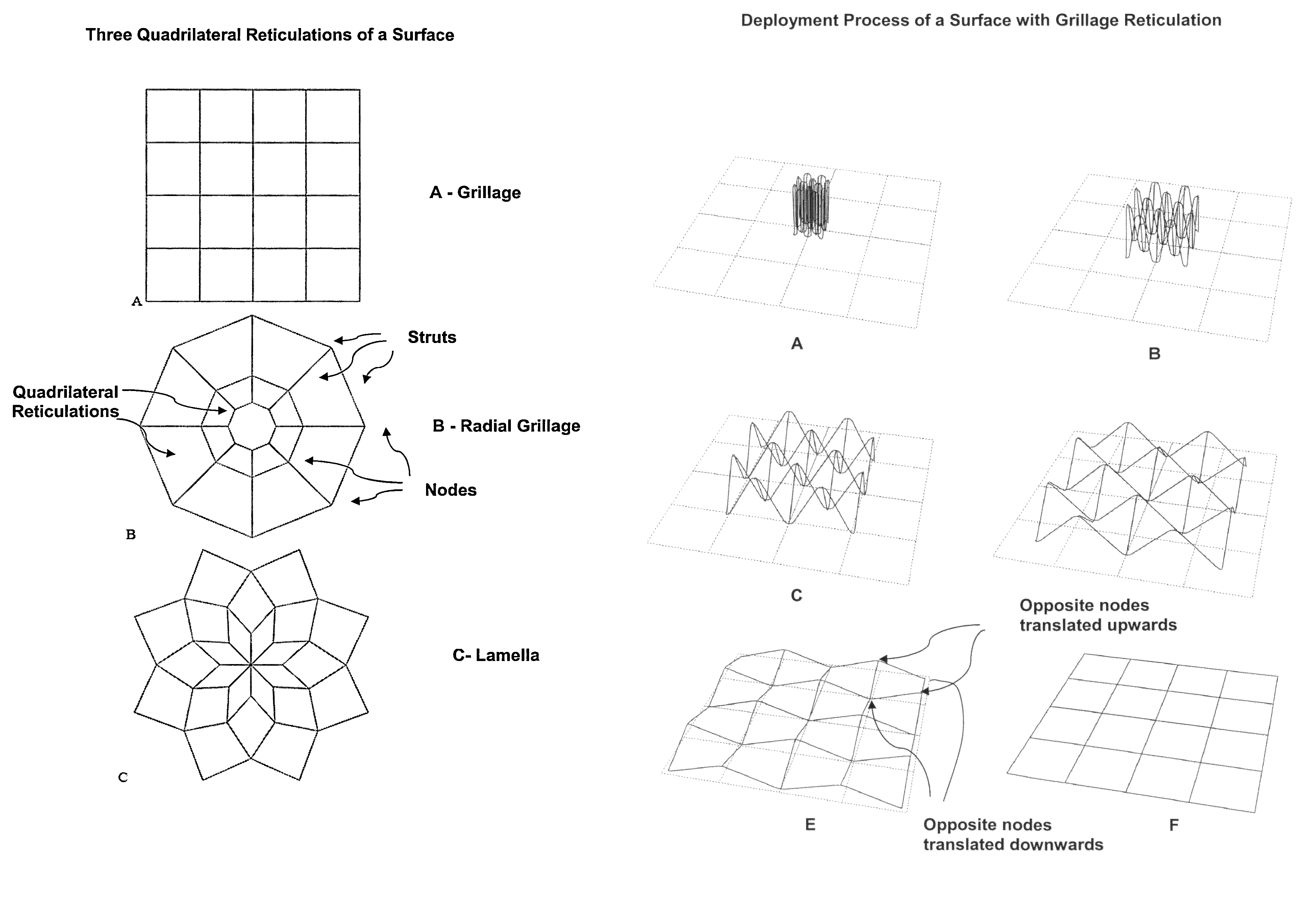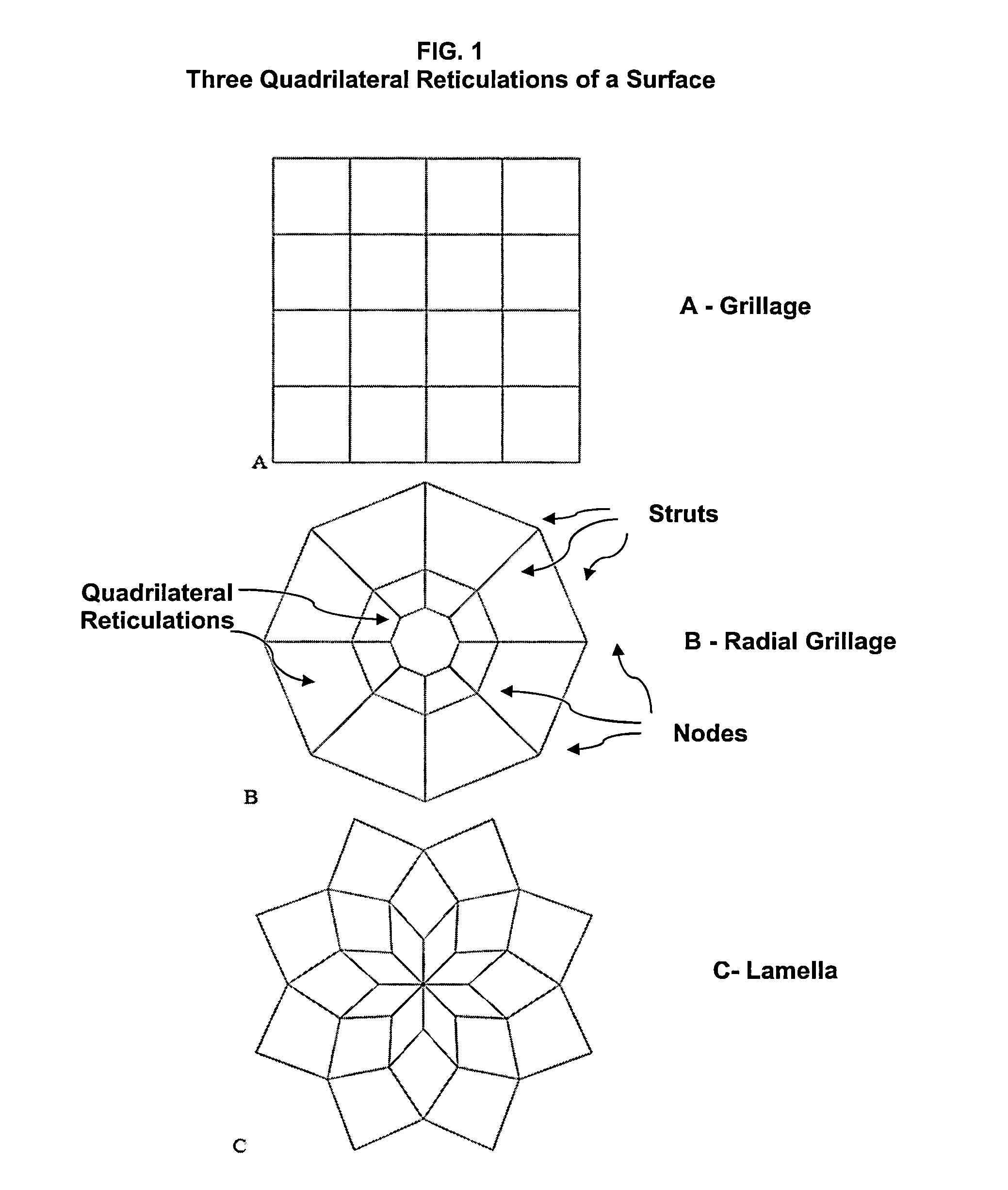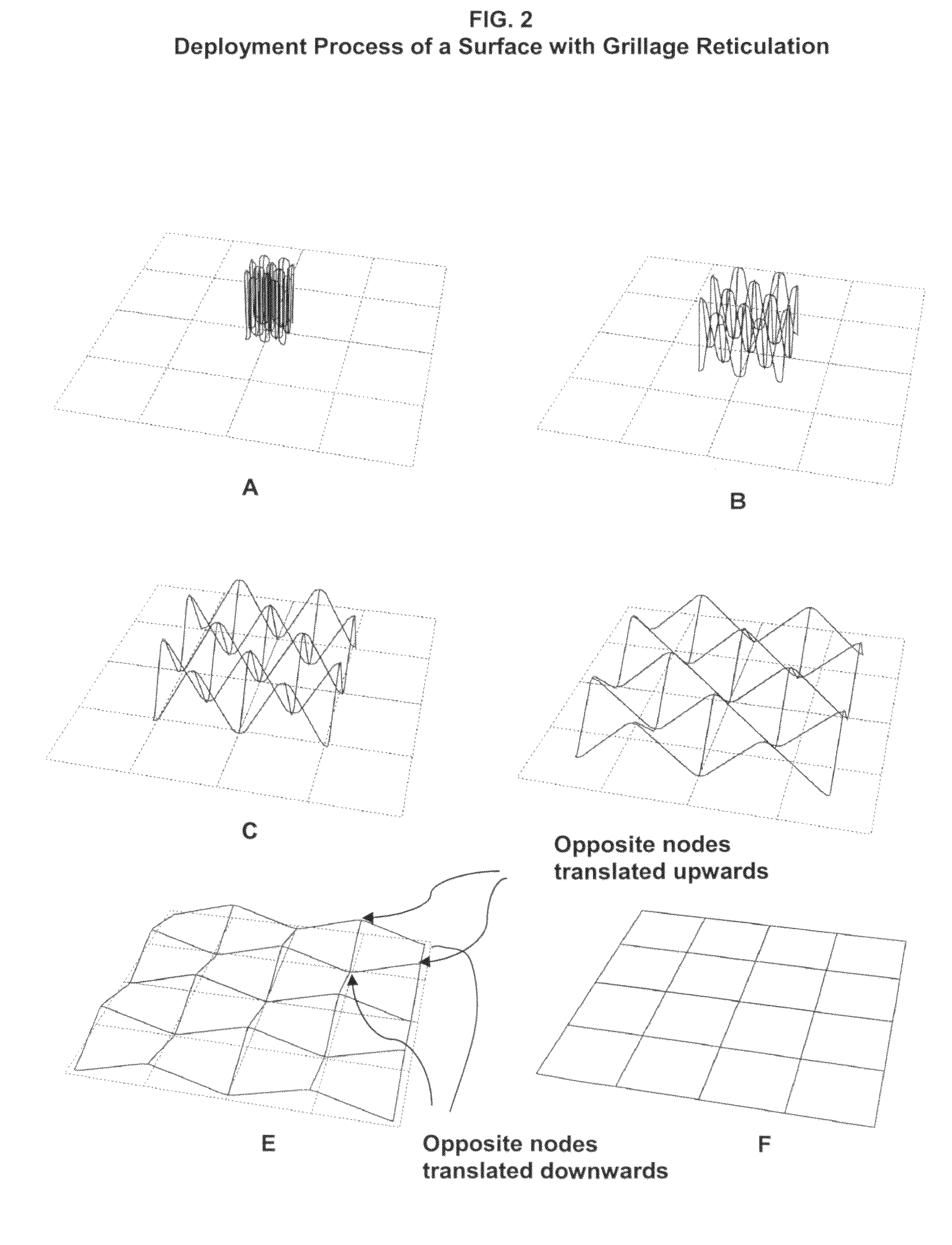Deployable structures with quadrilateral reticulations
a deployment structure and quadrilateral technology, applied in the field of compactly stowable and deployable structures, can solve the problems of poor dimensional stability of the reflector class, limited surface area to the diameter of the reflector, and limited use of the lower frequency
- Summary
- Abstract
- Description
- Claims
- Application Information
AI Technical Summary
Benefits of technology
Problems solved by technology
Method used
Image
Examples
Embodiment Construction
[0019]The current invention is a hybrid deformable, segmented surface support structure that is compatible with deployable thin shell reflector segments, meshed radio frequency (RF) reflective surfaces, tensioned solar array blankets, and rolled thin film photovoltaic arrays. It employs deployable structures with quadrilateral reticulations.
[0020]The structure is composed of multiple four member closed loops assembled to create an effective surface. Three quadrilateral reticulations are possible and are shown in FIG. 1: grillage, radial grillage and lamellar. These reticulations are common in civil engineering applications and various methods have been devised to render them deployable. However, nearly all prior work has been associated with pantographic (scissor) based deployable structures. A comprehensive review of the prior art associated pantographic deployable structures is found in Hanaor (Hanaor, A. and Levy, R., “Evaluation of Deployable Structures for Space Enclosures,” In...
PUM
 Login to View More
Login to View More Abstract
Description
Claims
Application Information
 Login to View More
Login to View More - R&D
- Intellectual Property
- Life Sciences
- Materials
- Tech Scout
- Unparalleled Data Quality
- Higher Quality Content
- 60% Fewer Hallucinations
Browse by: Latest US Patents, China's latest patents, Technical Efficacy Thesaurus, Application Domain, Technology Topic, Popular Technical Reports.
© 2025 PatSnap. All rights reserved.Legal|Privacy policy|Modern Slavery Act Transparency Statement|Sitemap|About US| Contact US: help@patsnap.com



